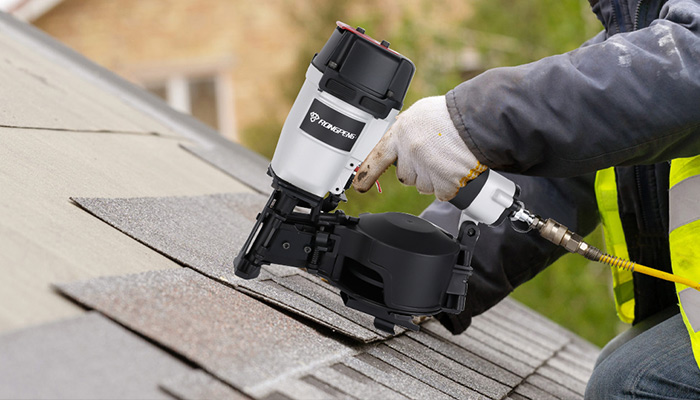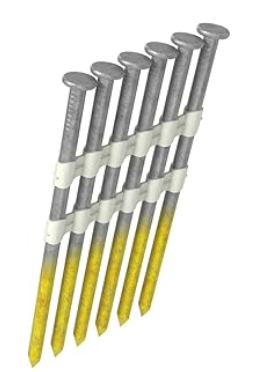

The weather is slowly getting warmer and drier, which means "roofing season" is coming. For roofers, air roof nailer is long-term partners, and a good roofing nail gun is everything.
Rongpeng pneumatic Roofing Nailer CN45N, designed to meet the needs of roofing work. With a working pressure range of 70-110 psi and accommodating nails from 3/4 inch to 1-3/4 inch, it is ideal for fixing asphalt shingles and other roofing materials. The aluminum alloy die-cast body and the Nail head and drive pin that have been heat-treated by German Ipsen greatly improve durability. One piece drive pin working life is more 0.3 millions times.
The main function of an air roofing nailer such as Rongpeng CN45N is to fix roofing materials to the roof deck. Roofing nailers use short and wide nail heads ranging from 1 inch to 2 inches, which can resist the shear force of severe weather and provide greater fixing force for thin and flexible materials.
Roof Installation
This includes fixing asphalt shingles, wood shingles, synthetic shingles, and metal roofs to roof decks. Nail guns provide the necessary force to drive nails through these materials, ensuring a tight and durable bond. For standard asphalt shingles, 4 nails are required per shingle. High wind zones require 6 nails per shingle.
Underlayment and Waterproofing
Air roof nailers are also very useful for securing underlayment materials such as synthetic underlayment, felt paper, and ice and water barriers. These materials are essential for providing a waterproof barrier between the roof decking and the exterior roofing materials. Nail guns ensure that the underlayment is firmly secured, preventing leaks and water damage. For example, when installing synthetic underlayment, the nail gun can drive nails through the material and into the roof decking, creating a seamless waterproof layer.
Insulation and Moisture Barriers
In addition to roofing materials, air roofing nailers can also be used to secure insulation boards and vapor barriers. These materials help regulate temperature and prevent moisture buildup.
Why Framing Nail Guns Can't Take Over Roofing Jobs
A common misconception is that framing nailers can be used interchangeably with roofing nailers. The main reason is the fundamental difference in nail types.
(roofing nails)
(framing nails)
Roofing nails are shorter, usually ranging from 1 to 2 inches, with large, flat heads that help keep shingles secure without tearing them. These nails are often galvanized or stainless steel coated to prevent rust and increase their service life. Framing nails, on the other hand, are much longer—ranging from 2 to 3.5 inches—and are designed to penetrate deep into structural wood. Using a framing nailer for roofing construction may cause nails to over-penetrate, tearing shingles and compromising weatherproofing.
The straight nail magazine of a framing nailer is not as large as the coil magazine of a roofing nailer, with a capacity of only a few dozen nails, which is not conducive to quickly and repeatedly nailing over a large area. The coil magazine of the RONGPENG CN45N can hold 120 nails. Reduce the safety risk of changing nails on and off the roof.